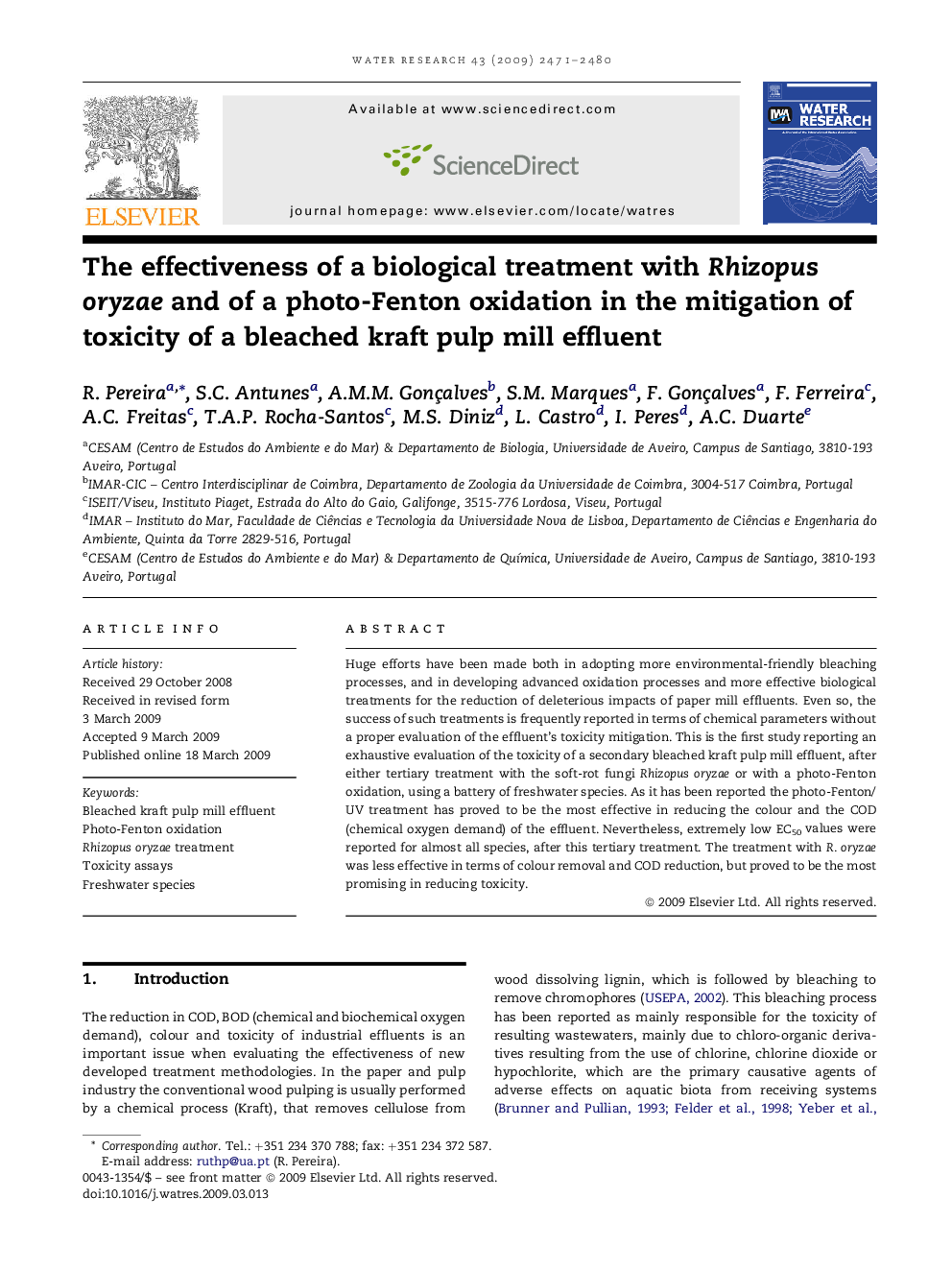| Article ID | Journal | Published Year | Pages | File Type |
|---|---|---|---|---|
| 4484867 | Water Research | 2009 | 10 Pages |
Huge efforts have been made both in adopting more environmental-friendly bleaching processes, and in developing advanced oxidation processes and more effective biological treatments for the reduction of deleterious impacts of paper mill effluents. Even so, the success of such treatments is frequently reported in terms of chemical parameters without a proper evaluation of the effluent's toxicity mitigation. This is the first study reporting an exhaustive evaluation of the toxicity of a secondary bleached kraft pulp mill effluent, after either tertiary treatment with the soft-rot fungi Rhizopus oryzae or with a photo-Fenton oxidation, using a battery of freshwater species. As it has been reported the photo-Fenton/UV treatment has proved to be the most effective in reducing the colour and the COD (chemical oxygen demand) of the effluent. Nevertheless, extremely low EC50 values were reported for almost all species, after this tertiary treatment. The treatment with R. oryzae was less effective in terms of colour removal and COD reduction, but proved to be the most promising in reducing toxicity.
